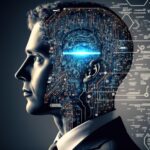Since November 2022 when OpenAI brought LLMs and GenAI to the broad public, I have discussed AI with more than 100 insurance companies, both big and small.
Nearly every one of them has conducted at least one pilot, but far fewer have moved to full deployment.
Some of this is a matter of time, but LLMs and GenAI might also be a trap—they appear to be magic solutions, but they aren’t. The slow, tedious hunt for product-market fit is still necessary.
These sophisticated models, capable of comprehending and generating human-like text, are pushing the boundaries of automation, creativity, and human-machine interaction. Their potential to revolutionize various industries, including insurance, and domains is undeniable. However, to fully harness this potential, it’s crucial to adopt the correct perspective: GenAI and LLMs should be viewed as powerful tools that empower humans, not as standalone products delivering pre-defined solutions.
While the allure of immediate results might tempt some organizations to treat LLMs as ‘plug-and-play’ products, this approach is fundamentally flawed. LLMs and AI require time and integration to be truly transformative. The iPhone’s slow start, with only 5.4 million units sold in its first year, exemplifies this. It wasn’t until years later that it revolutionized the market.
This applies to the enterprise, as well. Technologies like cloud computing, which seem old and ubiquitous now, took decades to become integral to business workflows. ChatGPT’s rapid rise to 100 million users in just a few weeks was unprecedented, yet this initial explosion doesn’t equate to sustained utility. Many users tried it once and didn’t return, reflecting a gap between novelty and practical everyday use. This is very clear in insurance, from underwriting to claims workers.
ChatGPT’s rapid rise to 100 million users in just a few weeks was unprecedented, yet this initial explosion doesn’t equate to sustained utility…. The true power of GenAI and LLMs unfolds when they are strategically integrated into existing workflows and processes.
While it’s impressive to get a large portion of the population to try a new product quickly, many didn’t find it immediately useful. This isn’t unusual—new technologies often take time to integrate into daily life and work. The same applies to insurance, where deployment of LLMs varies widely based on use case. The true power of GenAI and LLMs unfolds when they are strategically integrated into existing workflows and processes. Their versatility allows them to serve as the foundation for a multitude of applications, each customized to address specific challenges and requirements.
The misconception of treating LLMs as products rather than enabling technologies creates significant challenges. Organizations are tempted to market LLMs as ready-to-use solutions, but this oversimplifies their complexity and leads to misalignment between expectations and reality. Proper integration of LLMs requires customization, ongoing learning, and human oversight. Having the right set of control mechanisms to deploy this technology is even more important in regulated environments such as financial services.
Humans provide strategic direction and domain knowledge, while LLMs handle data processing, pattern recognition, and content generation. This synergy drives innovation, creating solutions that were previously unimaginable. Embracing LLMs as tools, not off-the-shelf products, unlocks numerous possibilities, empowering organizations to actively shape the future rather than passively consume technology.
LLMs and GenAI are not magic solutions….Proper integration of LLMs requires customization, ongoing learning, and human oversight.
A significant part of the challenge lies in differing perceptions between managers and employees regarding AI. Managers often focus on ROI and pilot projects, while employees integrate AI into daily workflows. Better communication and alignment within organizations are essential to fully exploit the potential of LLMs.
The journey from promising technology to practical applications involves a challenging process of productization. Successful companies demonstrate how LLMs can be integrated into products addressing specific user needs. This blend of product thinking and technological innovation is key to unlocking the full potential of LLMs.
The transformative power of GenAI and LLMs depends on viewing them as tools that empower human innovation. This paradigm shift enables seamless collaboration between humans and AI, tackling complex challenges and achieving outcomes beyond the reach of either alone. Embracing this perspective unlocks limitless possibilities, fostering a new era of human achievement.





















 Better Results Ahead? Technology Improvements in Commercial Fleets
Better Results Ahead? Technology Improvements in Commercial Fleets  U.S. P/C Industry Combined Ratio Headed Back Up to 100: S&P Ratings
U.S. P/C Industry Combined Ratio Headed Back Up to 100: S&P Ratings  Potential Tariff Auto Severity Impact on Travelers: Single-Digits or Less
Potential Tariff Auto Severity Impact on Travelers: Single-Digits or Less  2024 Second on Record for Most Tornadoes in the U.S. in a Year
2024 Second on Record for Most Tornadoes in the U.S. in a Year 






